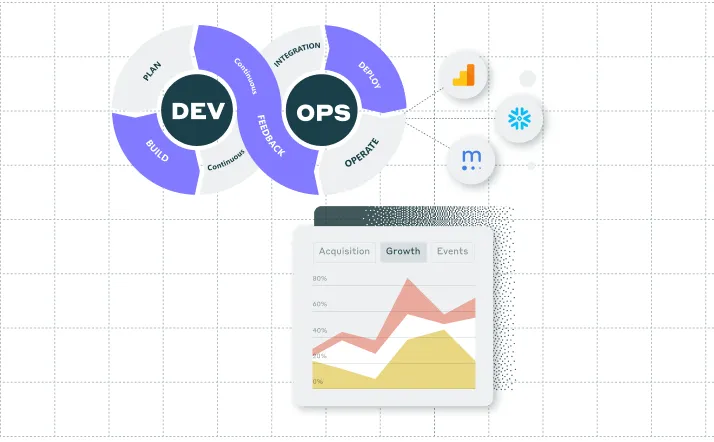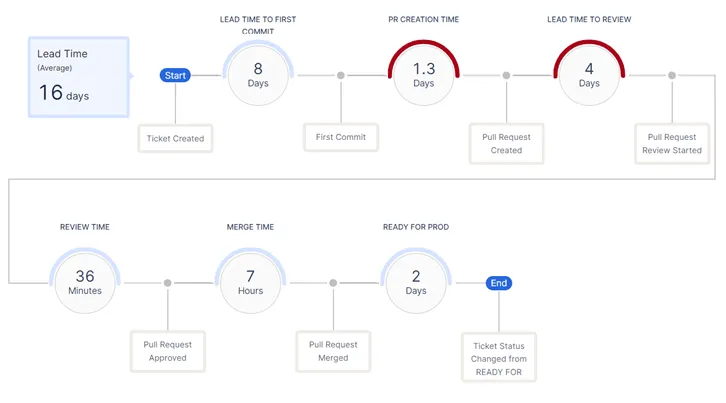In today’s fast-paced digital landscape, organizations are continually seeking ways to enhance their software delivery and operational performance. The DevOps methodology has revolutionized the way software is developed and deployed, fostering collaboration between development and operations teams.
A crucial element in this journey is the adoption of DORA (DevOps Research and Assessment) metrics; in James Putman’s Lightning Talk session, we will delve into their valuable insights into the effectiveness of DevOps practices and associated aid in streamlining workflows.
A Comprehensive Look Into DORA Metrics

DORA metrics, developed by the DevOps Research and Assessment group, provide a comprehensive framework to assess an organization’s software delivery performance. These metrics are designed to gauge the efficiency, effectiveness, and overall impact of DevOps practices, enabling teams to identify areas of improvement and optimize their workflows. DORA metrics are divided into four key areas: Deployment Frequency, Lead Time for Changes, Mean Time to Recover, and Change Failure Rate.
- Deployment Frequency: This metric measures the frequency at which an organization deploys its software. A higher deployment frequency indicates that teams are releasing updates more frequently, which can lead to faster feedback loops and quicker issue resolution.
- Lead Time For Changes: This metric assesses the time it takes for a code change to be developed, tested, and deployed to production. A shorter lead time indicates that teams are efficiently moving code through the development pipeline.
- Mean Time To Recover: MTTR measures the time it takes to recover from incidents or failures in the production environment. A lower MTTR implies that teams are adept at identifying and addressing issues promptly, ensuring minimal disruptions.
- Change Failure Rate: This metric evaluates the percentage of deployments that result in failures. A lower change failure rate signifies that the organization has robust testing practices and a stable deployment process.
Best Practices For Implementing DORA Metrics

- Define Clear Objectives: Clearly outline the goals you want to achieve with DORA metrics. Whether it’s reducing lead time, improving deployment frequency, or enhancing recovery times, having well-defined objectives is crucial.
- Automate Data Collection: Automate the collection of metrics to ensure accuracy and consistency. Leveraging tools and platforms that integrate seamlessly with your DevOps processes can streamline data collection.
- Continuous Monitoring: Regularly monitor DORA metrics to track your progress over time. This allows you to identify trends, patterns, and areas that require attention.
- Collaborate Across Teams: DORA metrics encourage collaboration between development, operations, and other teams involved in the software delivery process. Collaborative efforts are essential to improving overall performance.
Enhancing DevOps Workflows With DORA Metrics

DORA metrics play a pivotal role in enhancing DevOps workflows by providing quantifiable insights that enable organizations to identify bottlenecks, streamline processes, and make data-driven decisions. When implemented effectively, DORA metrics can lead to:
- Improved Delivery Speed: DORA metrics highlight areas where improvements can be made, ultimately speeding up the software delivery process.
- Increased Stability: By focusing on metrics like change failure rate and mean time to recover, organizations can enhance the stability of their production environments.
- Data-Driven Decisions: DORA metrics empower teams to make informed decisions based on real-time data, rather than relying on assumptions or gut feelings.
- Continuous Improvement: Regularly analyzing DORA metrics fosters a culture of continuous improvement, where teams are encouraged to optimize their practices over time.
Closing Thoughts
In today’s competitive digital landscape, organizations must continually strive to optimize their software delivery and operational performance. DORA metrics offer a comprehensive and objective way to assess DevOps practices, providing valuable insights that drive improvement. By focusing on deployment frequency, lead time for changes, mean time to recover, and change failure rate, organizations can enhance their DevOps workflows, improve delivery speed, and achieve a higher level of operational excellence. Embracing DORA metrics is not just a practice — it’s a transformative journey towards efficiency, collaboration, and success in the world of DevOps.